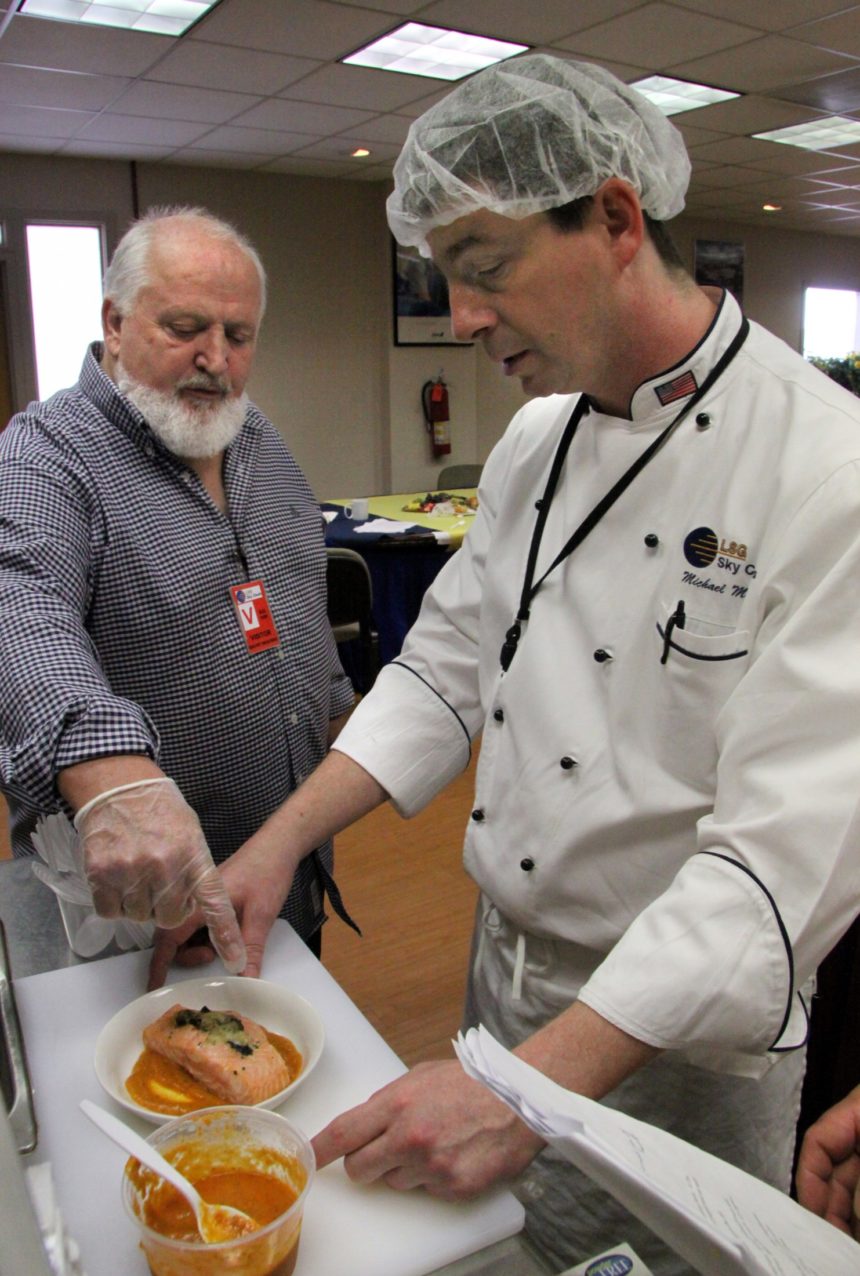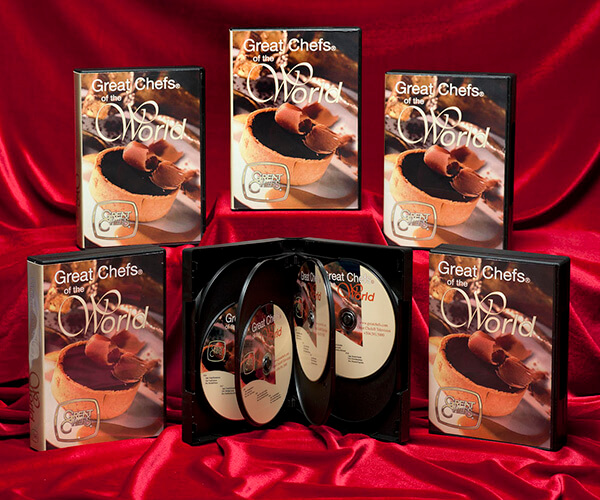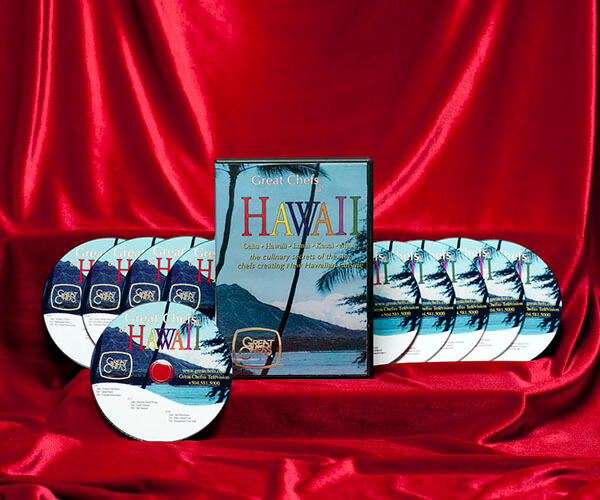He had complications from a stroke, said Mel Davis, a longtime associate and spokeswoman.
Mr. Richard (pronounced ree-SHAR) began his career at 14 as an apprentice pastry chef in his native France before coming to the United States in his 20s. He had his first major success in Los Angeles, but he had made Washington his home since the 1990s, when he opened Citronelle in Georgetown.
In a city long belittled as a stodgy outpost of steakhouses and uninspired cuisine, Mr. Richard brought a Gallic flair and imagination to his kitchens. At Citronelle, which opened in 1993 and closed in 2012, he transformed classic French dishes into original and distinctive creations.
Citronelle was among the first restaurants on the East Coast with an open kitchen, in which Mr. Richard and his staff prepared meals as if on a stage in full view of their customers. For him, a meal was a dramatic event, seasoned with humor, irony and the faith that food could impart a deeper appreciation of life.
“This is my religion,” he told The Washington Post in 2007. “I’m a priest of food. I just love to cook. I love to please in the kitchen.”
[Chef Michel Richard was happy in the kitchen. And you could taste it.]
He found inspiration in unlikely places, borrowing elements from Kentucky Fried Chicken, potato chips and candy bars for his daring style of cooking. Diners came from all over the world, and in 2007 Mr. Richard received the James Beard Award, the food world’s Oscar, as the country’s outstanding chef.
His empire grew to include restaurants in California, Las Vegas, New York and Tokyo, and he designed menus for airlines and Amtrak. But for nearly 20 years, Mr. Richard’s primary theater — and culinary laboratory — was Citronelle, in the now-shuttered Latham Hotel on M Street NW in Georgetown.
“Michel was a master of restaurant technique, like nobody else, but I don’t think that was his greatest contribution,” Mark Furstenberg, a baker and Washington restaurateur, said. “Michel became the center of the chefs’ community in Washington. He became, for all of us, an inspirational and social leader.”
Mr. Richard was in the kitchen early in the morning, experimenting with new dishes and food combinations. He often dropped items from the menu, even if they were popular, simply because he was tired of making them.
He liked to mix colors, flavors and textures in unexpected ways, once using a Jackson Pollock abstract painting as the model for a “sashimi mosaic,” made from thinly sliced disks of raw eel, tuna, beef and peppers.
He devised an entire menu of desserts that resembled breakfast foods. His “fried egg” dessert, for instance, was made of a “yolk” of pureed papaya, with almond custard for the “egg white.”
He used potatoes in a variety of ways, including mincing them as fine as rice, then cooking them like a risotto. He reconstructed the Kit Kat bar — that staple of vending machines everywhere — as a high-concept chocolate dessert.
One of Mr. Richard’s signature dishes at Citronelle was a faux-beluga caviar, which he playfully called “begula,” made from couscous dyed with squid ink, sitting atop a bed of shredded lobster.
“He doesn’t just cook, he develops new methods,” Washington Post critic Phyllis C. Richman wrote in 1993 in one of the first reviews of Citronelle. “He encases a chicken breast in mushroom mousse, the result being moist round slices. He creates garnishes of crunchy translucent potato slices, stiffened cabbage leaves and sugared apple slices as hard and glowing as stained glass, all dried at low heat in the oven.”
Many of his dishes had a crunchy texture, derived from nuts, chips, puffed rice, finely sliced onion rings or the crackling skin of fish, earning Mr. Richard the nickname of “Captain Crunch.” The idea came from a cross-country trip he made in the 1970s, when he stopped at a Kentucky Fried Chicken franchise.
“For me it was a revelation,” he told The Post. “It was s-o-o-o delicious: moist and crunchy. In France, we don’t have a lot of crunchy food. I discovered texture in this country.”
Other than Pomme Palais, a bakery in Manhattan, the only restaurant Mr. Richard was still running at the time of his death was Central Michel Richard, a high-end bistro that opened in downtown Washington in 2007. The menu was built around such standard American fare as fried chicken, hamburgers, and macaroni and cheese, enlivened by what he called “a French accent.”
“The creativity of him is what we all wish,” Daniel Boulud, a top French chef, told The Post in 2003. “We wish we could think the way he thinks. And he’s captivating. He’s French — but just French enough.”
Michel Louis-Marie Richard was born March 7, 1948, in Pabu, France. He grew up in a house without running water after his father abandoned the family.
He described his introduction to the kitchen to The Post in 2006: “My father left when I was 6. My mother worked in a factory. My brother and sisters were saying, ‘Michel, we are hungry.’ ”
When a schoolmate invited him to his father’s restaurant, Mr. Richard immediately recognized his future.
“When we opened the back door of the restaurant and I entered the kitchen,” he recalled, “it was for me paradise.”
At 14, Mr. Richard became an apprentice to a pastry chef, who was demanding and physically abusive, but who taught him the rudiments of the craft. Mr. Richard briefly entertained the idea of becoming a painter before finding a job with Gaston Lenôtre, the premier pastry chef in Paris.
After learning to make elaborate cakes and confections from spun sugar, chocolate and butter, Mr. Richard came to the United States in 1974 to open a patisserie in New York for Lenôtre. It closed after one year, forcing Mr. Richard to move to Santa Fe, N.M., and then to Los Angeles, where he had a pastry shop.
“I still remember when Michel opened it,” chef Wolfgang Puck told the New York Times in 2013. “It caused traffic jams. I never had a croissant that good, even in Paris.”
But Mr. Richard yearned to be a chef in full, not just a baker. After years of self-education, he opened Citrus, a nouvelle cuisine restaurant blending French and Californian cuisines, in 1986. It became a sensation, and he later launched the first incarnation of Citronelle in a hotel in Santa Barbara, Calif.
Mr. Richard came east when the company that owned the Santa Barbara hotel acquired properties in Washington and Baltimore, and offered him a chance to create new restaurants.
Not all of his ventures succeeded as well as Citronelle and Central. In 2013, he opened dual restaurants at the Palace hotel in Manhattan that received scathing reviews and soon closed.
In his final years, Mr. Richard was often seated at a back table at Central, dining on his favorite meal: roast chicken, a glass of wine and a dish of ice cream.
His marriages to Monique Augst Richard and Elisabeth Richard ended in divorce. Survivors include his wife of 30 years, the former Laurence Retourne, of Rockville, Md.; a son from his first marriage, Michael Richard, of the District, a chef at the Fairmont Hotel; a son from his second marriage, Sebastien Richard of San Francisco; four children from his third marriage, Christophe Richard of New York, Luc Richard, a chef in Chicago, Christelle Richard of Orlando and Clement Richard of Rockville.
“I want to create a festive feeling. I want people to be surprised, to be happy,” Mr. Richard said of his approach to cooking. “It doesn’t take a genius to do this. Just someone like me.”











